Gear breaks. Yep, that’s the unfortunate reality of cruising. Even worse, you don’t know what’s going to break, how it will break or when it will break. But I can pretty well guarantee that something will sometime. Whether you’re going out for the afternoon or heading around the world.
Over our years of cruising, we discovered that there are basically two types of cruisers: those who have thought ahead about what might break and those who haven’t. And contrary to what you might think, it’s those who have planned for stuff to break who are the happiest. Over and over, it’s the people who haven’t planned ahead who are the most stressed . . . and end up hating cruising.
Because yes, stuff breaks. Even with the best preventive maintenance, you can’t avoid it.
But here’s the good news. You don’t have to be able to fix everything immediately (sure, it’s nice if you can, but that’s just not always possible). What you do need is a plan of what you’ll do in the meantime.
So, take a few minutes and think about some of the most common galley gear breakages and what you’d do. Hopefully, the answer won’t be “panic!” Actually, in most cases you can continue your trip — you don’t have to immediately get something fixed.
There’s no universal answers to these questions — a great deal depends on where you are, how long you’re planning to be out and what options might exist on your boat — but I’ll give some possible “think ahead” plans for what you can can until something can be fixed.
- Refrigerator. Transfer items into a cooler to keep them for a few days; see if ice is available; cook and eat most perishable meats immediately; use pressure cooker as a giant can to keep food for a couple of days; give food to nearby boats (maybe they’ll keep it for you; maybe it’s just a gift, but better than it going to waste); have a party for everyone in the anchorage and use all your perishable foods. Have sufficient non-refrigerated (canned or otherwise) food to last the remainder of the trip.
- Cooler (broken hinge, crack in box). Duct tape; eat items quickly; have sufficient other food for trip.
- Stove. Use grill (you can cook on the grill in a pan); cook over wood on the beach; have plenty of food that doesn’t have to be cooked.
- Water (tank leak, run out, go bad). Have water in more than one container; manual purifier (if in freshwater) or watermaker (salt water); strain and boil water if in freshwater; other non-alcoholic drinks; don’t use for non-essential purposes; institute rationing; use liquid from canned food in cooking.
- Water (pump not work). If it’s the pressure water pump that’s bad, have a manual pump. There may be an inspection port that’s large enough for you to be able to dip water out of the tank.
- Pan (lost overboard while washing?). Have more than one; cook food in metal foil.
- Can opener. Have a spare. Maybe two spares.
- Knife. Have a sharpener. Spares.
- Coffeemaker. Carry some instant coffee as a backup.
Electricity is another key item to think about — depending on your systems, it may power your refrigerator and water pump. It provides light. Some boats have an electric stove, coffeemaker and/or microwave. And on most boats, electricity is needed for the propane solenoid. Losing electricity means that all those are gone and will need work arounds — a manual freshwater pump, flashlights or a Coleman lantern, knowing how to bypass the solenoid — or cook on the grill, if the fuel is separate.
Admittedly, having the ability to fix things that break is great. But it’s also important to think about what you can do if you can’t fix something. And while I’ve listed galley stuff here, you should think about the rest of the boat systems, too.
Related Posts

Quickly find anchorages, services, bridges, and more with our topic-focused, easy-to-use waterproof guides. Covering the ICW, Bahamas, Florida, and Chesapeake.
Explore All Guides

Carolyn Shearlock has lived aboard full-time for 17 years, splitting her time between a Tayana 37 monohull and a Gemini 105 catamaran. She’s cruised over 14,000 miles, from Pacific Mexico and Central America to Florida and the Bahamas, gaining firsthand experience with the joys and challenges of life on the water.
Through The Boat Galley, Carolyn has helped thousands of people explore, prepare for, and enjoy life afloat. She shares her expertise as an instructor at Cruisers University, in leading boating publications, and through her bestselling book, The Boat Galley Cookbook. She is passionate about helping others embark on their liveaboard journey—making life on the water simpler, safer, and more enjoyable.
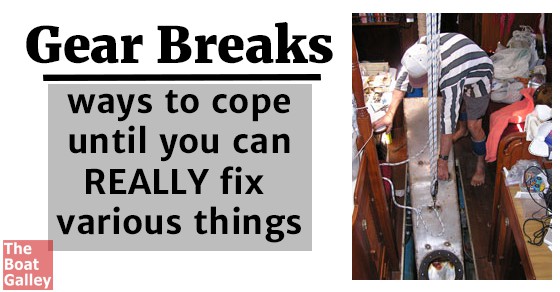


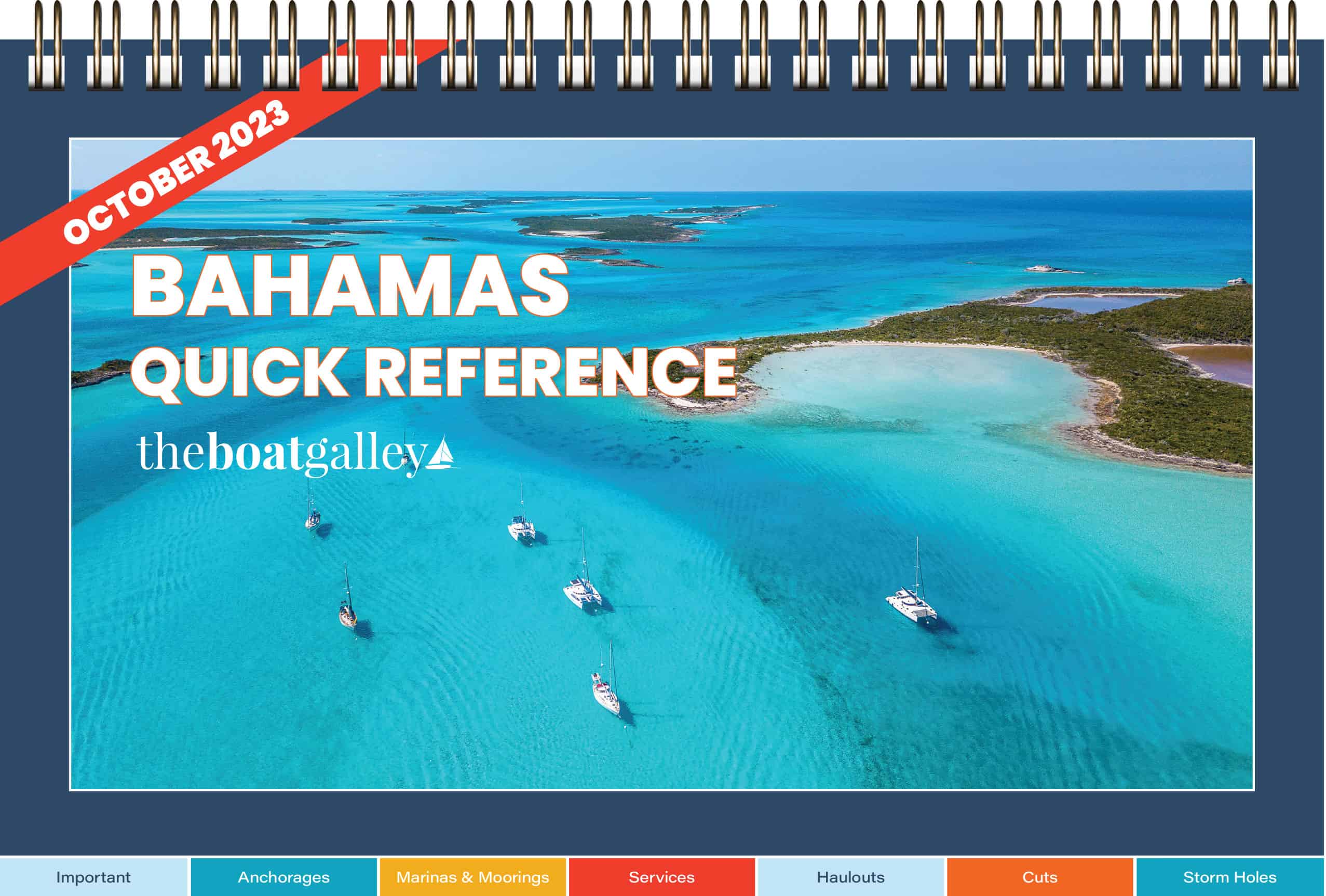
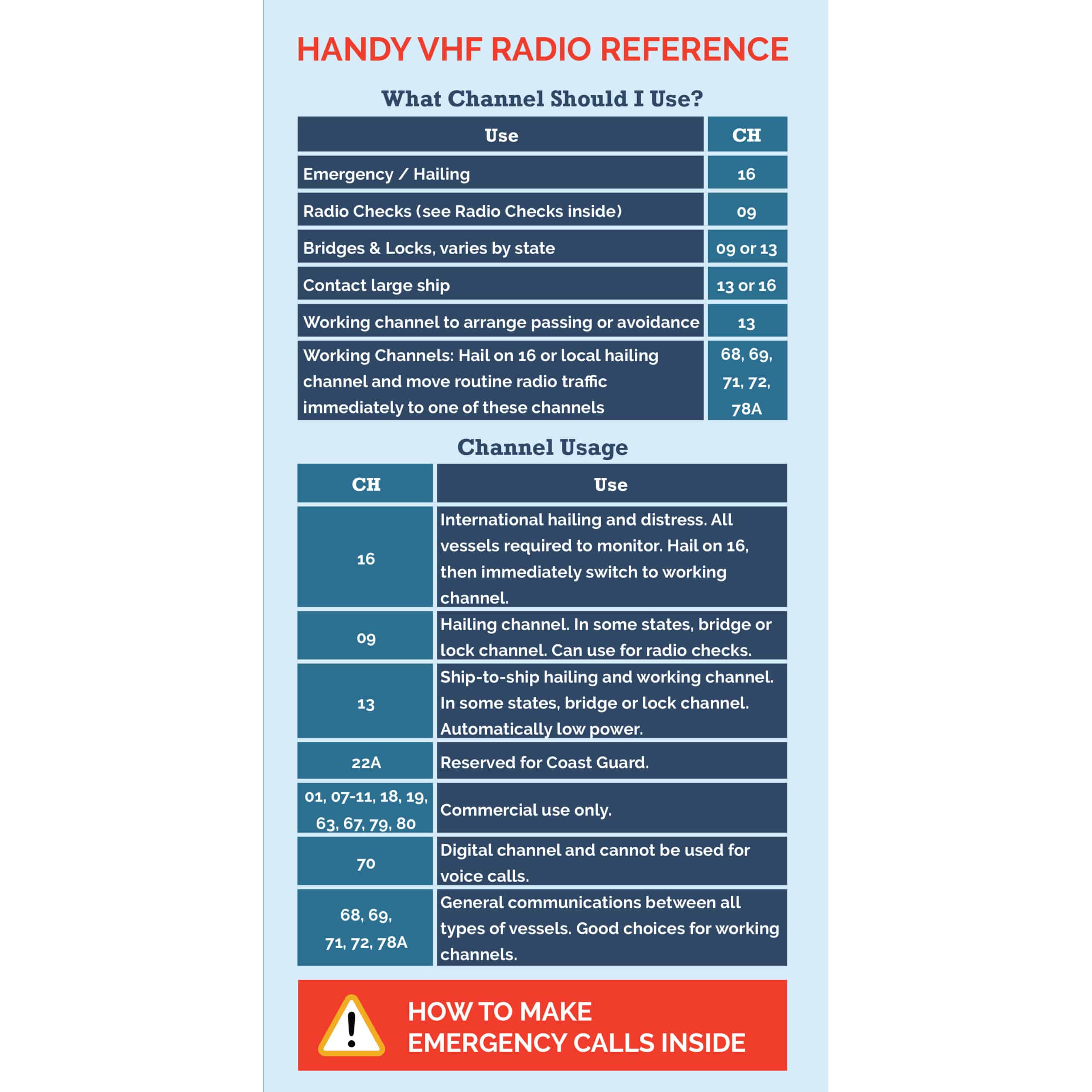



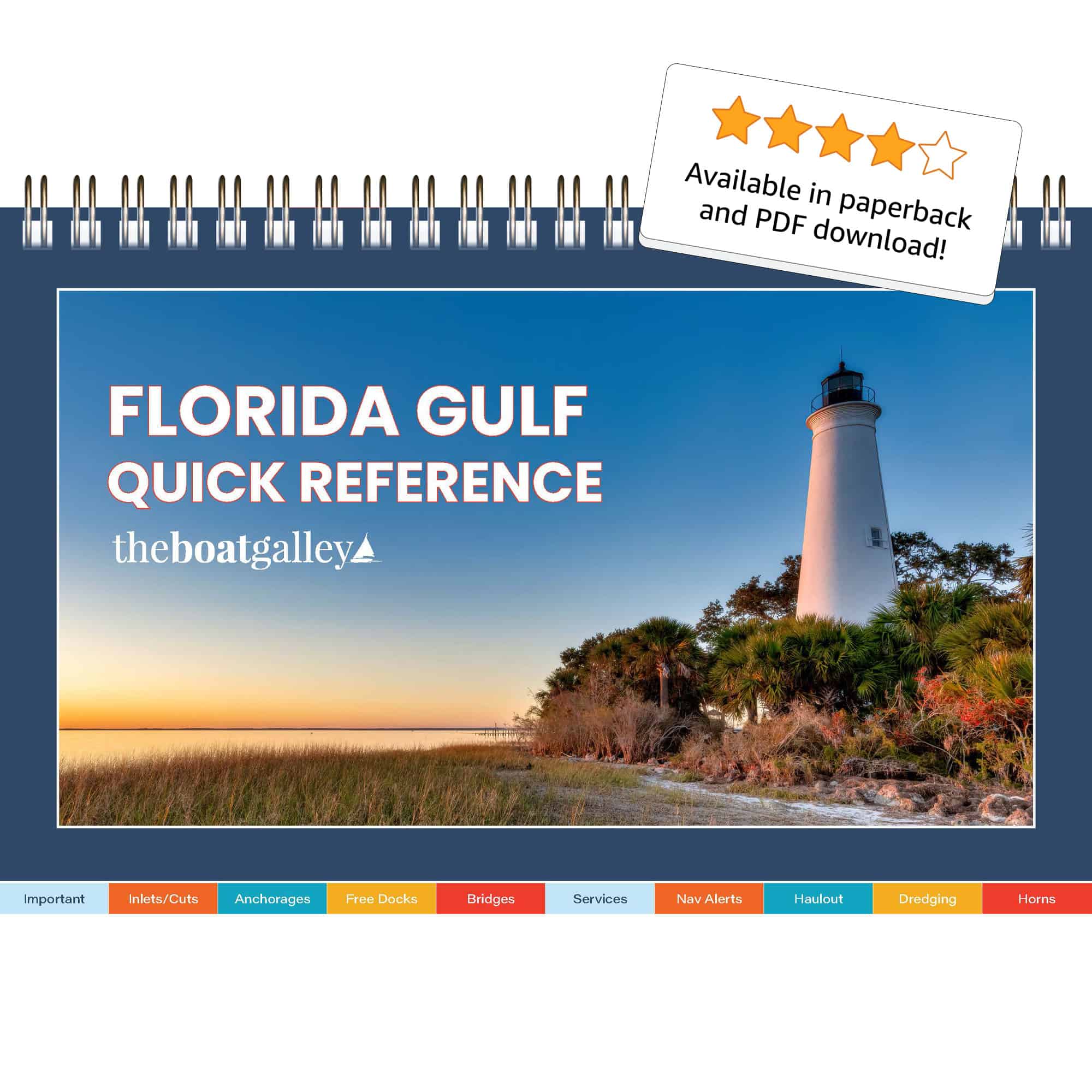
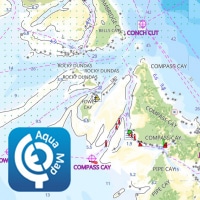
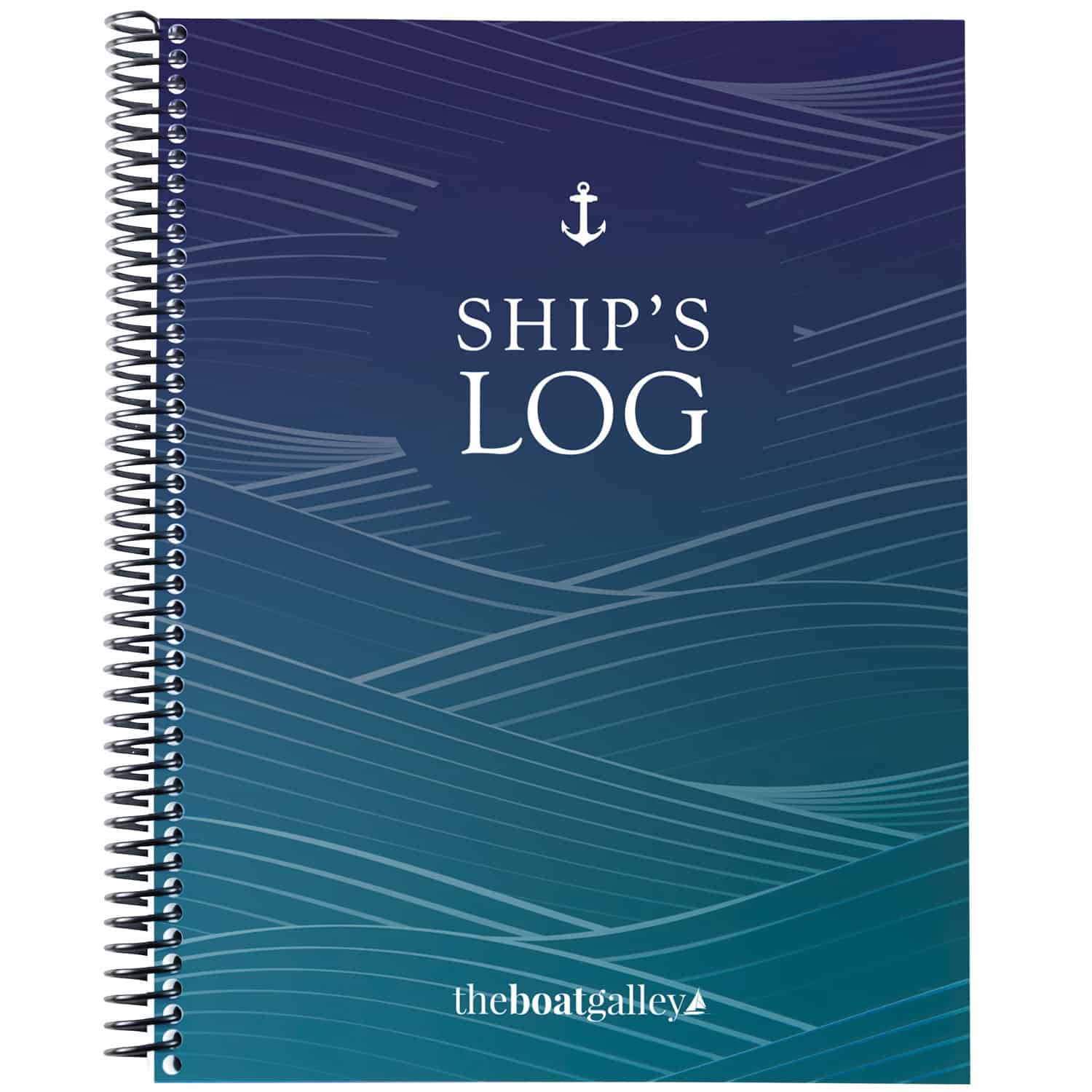
tami says
Fuel issues. Old boat, dirty tanks, trying to get boat from VA to MS. Gulf of Mexico crossing stirred up all the stuff. Trying to get into port, engines began to surge. Had fuel hose on board, so installed temp fuel line running to jerry can to keep on keepin’ on. When we got home, cut holes into tanks, inspected and cleaned, and installed inspection ports.
Carolyn Shearlock says
Great use of what you have . . . I love it and will remember should the need ever arise!
SV Simplicity II says
Hi Carolyn!
I love reading your web site and have found your dialogue to be truly informati ve and inspiring!
Regarding your decision to go with welding the leaks in your water tank as opposed to some of the other available solutions, can you tell me how you came to this decision? We are going through the same sitution and are debating the best course of action.
Thanks so much and happy sailing!
Shelley Singer
Carolyn Shearlock says
So sorry you’re having to deal with it. Basically, we were at a small marina attached to a great boat yard. There was a very good welder there (extremely experience with stainless), who could actually do the welding on the boat so that we didn’t have to move the tank out of the boat — out of the bilge, yes, but NOT up the companionway and through the cockpit (that would have been a deal-killer because of the size of the companionway opening vs. the size of the tank). Our other option would have been JB Weld, which we did seriously consider . . . every day while we waited for the welder. Another thing to note was that we had several small holes, none larger than about 1/4″ diameter. We also had him weld a few areas where we saw pitting, hopefully avoiding future leaks. Good luck and I’d love to hear what you end up doing and how it works — ours turned out great, we never had a further problem and I follow the blog of the current owners and haven’t heard mention of a problem.
Michelle Rene says
This was really awesome food for thought, thanks for sharing!
tami says
Hi Carolyn, it’s me (again)
Saw your suggestion re: pressure cooker to keep food. That has been debunked. If you think about it, the fact that the cooker loses pressure also means that bacteria can get in
from HipPressureCooking.com:
“MYTH: Pressure cooking sterilizes food so there is no need to refrigerate leftovers that will be eaten the next day.
FACT : Bringing a pressure cooker to pressure will not sterilize its contents. The pressure cooker has the ability to sterilize, but it takes time. Clinical sterilization can only be achieved by running a pressure cooker that reaches 15PSI at high pressure for 30 minutes5 – pressure cookers that do not reach 15PSI, like most electric models, will require even more time. Few pressure cooker recipes actually need 30 minutes of cooking time. Pressure cooking food for less than 30 minutes is not going to kill any more bacteria than bringing food to a boil (212F/100C). However, just like boiling without pressure, bringing a cooker to pressure will kill most bacteria responsible for cases of food poisoning like, Salmonella6, Campylobacter7, Lysteria8 and E.Coli9. But, seriously, don’t turn the contents of your pressure cooker into a bacteria petri dish! Follow the same safety guidelines for handling and storing pressure cooked food as for conventionally cooked food.
Read more: 3 pressure cooker nutrition myths that just won’t go away… ’till now http://www.hippressurecooking.com/3-pressure-cooker-nutrition-myths-that-just-wont-go-away-till-now/
Carolyn Shearlock says
Thanks for the info. When my internet is a little better (we’re in a remote anchorage and it’s “intermittent,” I’ll edit the post.
Tammi Abbey says
How do you bypass your electric propane solenoid?
Carolyn Shearlock says
Our boat came with it built in by the builder, but basically, it takes a T fitting with a valve between the tank and the solenoid and another T fitting after the solenoid (and hose connecting the two T fittings). As an alternative in a pinch, you could use a straight hose connector and remove the hose from both sides of the solenoid and connect them together.
Tammi says
Great thank you, I love your site we are getting ready to do the great loop in September in our sailboat from Kenosha WI. We have really learned a lot from your site as well as purchasing many helpful items for our journey.